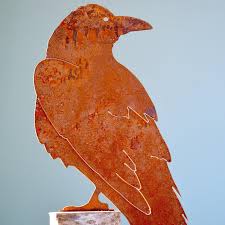Or, for those boring old manual clocks, you will have to put them forward an hour yourself. Alternatively, feel free to save time now and manually add an hour in your head every time you check the time, then after a few weeks get around to actually changing them, then spend a few weeks confused about whether you changed them or not and if you still need to add an hour and checking the time on your phone to make sure.


Forward?
Commenting from Canada and our saying is “spring forward, fall back” when it comes to remembering that, but you guys have opposite seasons. Is it the same???
It is spring in Australia
Which is why we have opposite daylight time 🙂
No matter where in the world you are, your daylight time change is ‘spring forward’ because in spring the days grow longer, regardless of which calendar months your spring occurs in.
So when we go back you go forward? That seems so odd
As a co-worker told me, “when it’s winter in the Southern Hemisphere, it’s night in the Northern Hemisphere”. He was too stupid to be joking.
Well, not actually on the same dates. In Australia, the current period of DST runs from 1 Oct 2023 to 7 Apr 2024 (see here for details: https://www.timeanddate.com/time/change/australia?year=2023). I see Canada is switching back to standard time on 5 Nov 2023 then switching back to DST on 10 Mar 2024 (https://www.timeanddate.com/time/change/canada?year=2023).
But essentially, yeah, anywhere that uses DST will switch to DST (i.e. moves clocks forward) at a time of year when the sunrise is getting earlier (typically some time in spring), and switches to standard time (i.e. moves clocks back) at a time of year when sunrise is getting later (typically some time in autumn/fall).
The seasons are opposite in Canada and Australia, so the times of the calendar year when we change to and from DST are roughly opposite (Canada uses DST uses for about 8 months of the year, whereas in Australia it’s only about 6 months, but the point is we both ‘spring forward’).
Huh, so if I had a friend in Australia that I talked to every day I would have to adjust for two extra hours every time daylight savings happens?
Well, because the daylight time switches are on different dates, you would have to adjust 1 hour, then another hour a month later, then 6 months later adjust an hour, then a month after than another hour 😆
Here’s a table to describe that:
Holy smokes that’s super confusing. I get it, but I guess I’ve just not really ever thought about it.
Now I’m glad I do t have any Australian friends. :P
The days are the same length, it only changes how early and late the sun rises and sets.
No, that’s not how we do it in Australia. We run 23 hour days over the summer months, and after 6 months of that we’ve saved up a full week which we use to have a wild country-wide party.